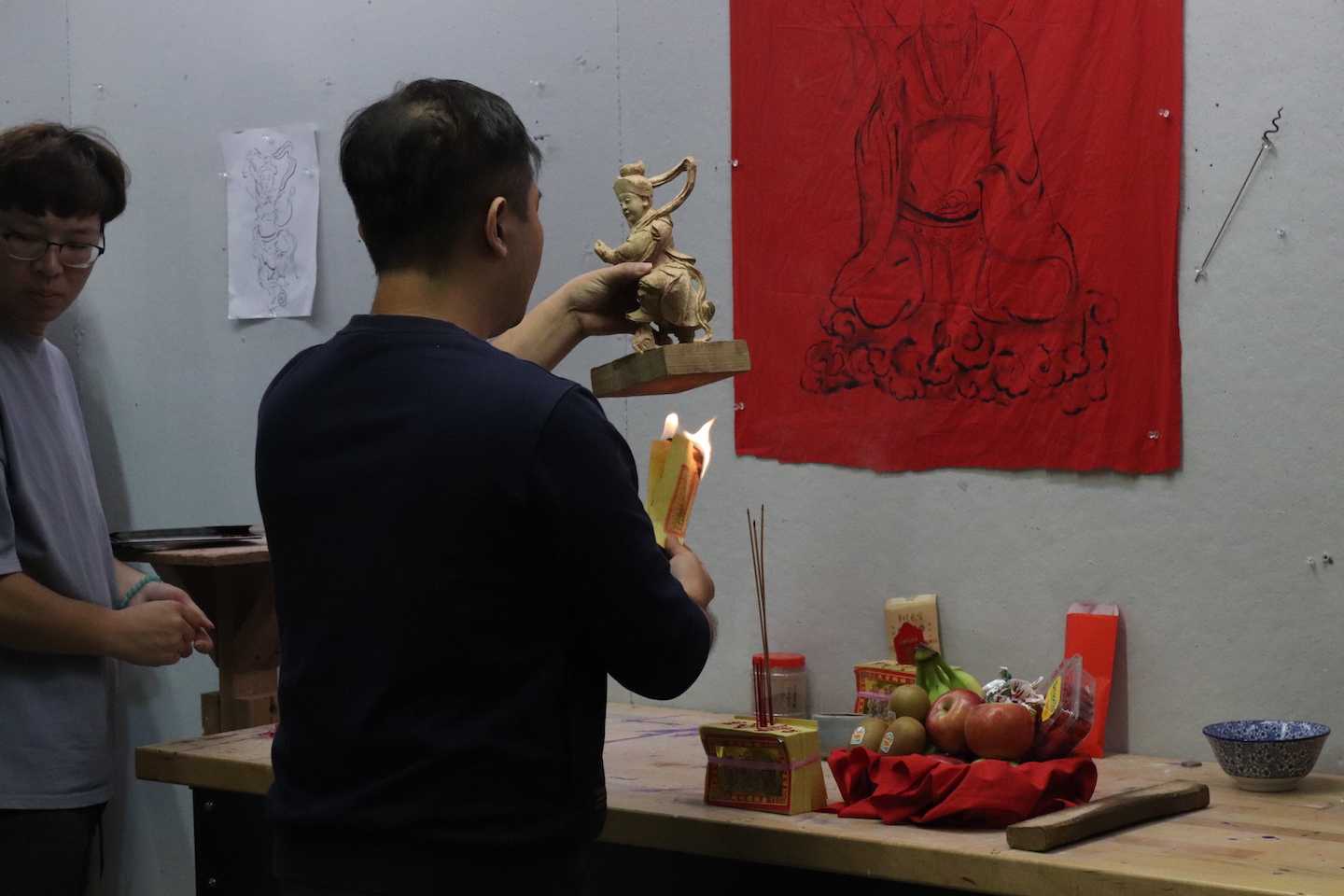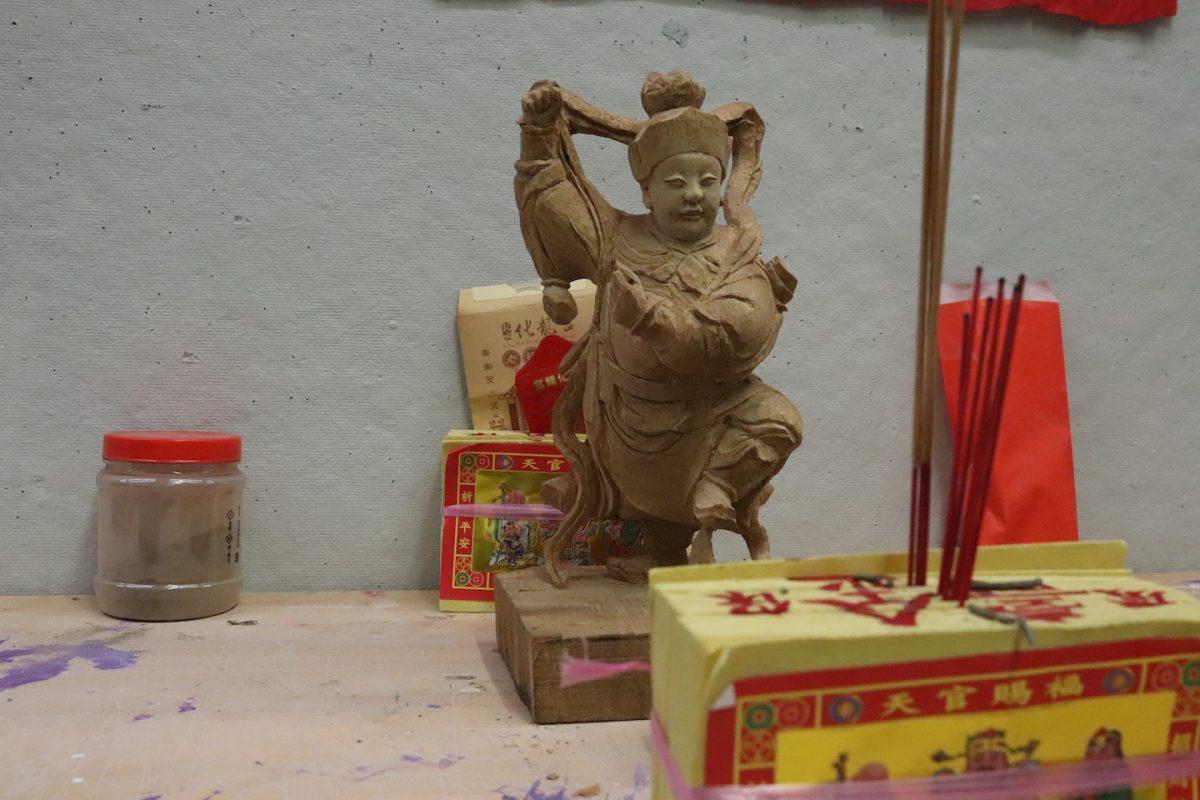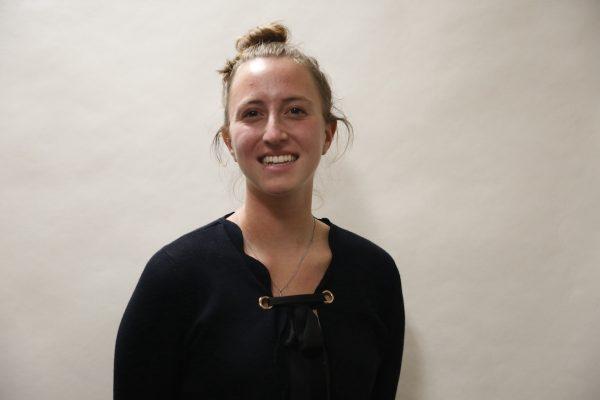From Oct. 23-Nov. 3, the Nealis Program in Asian Studies partnered with the department of art and art history to host a two-week Artists Residency “When Heaven Meets Earth” in Boland Hall.
The program brought in three Taiwanese artists: Chen Zongwei, Huang Yusheng and Wu Shuming under the direction of Aaron Reich, Ph.D., who met Zongwei when he was conducting research in Taiwan.
Over this two-week period, Zongwei, with the support of his apprentices, Yusheng and Shuming, held various workshops for students, faculty and outside community members to learn about the sacred significance of Daoist deities and traditional temple statues.
Zongwei also held open studios where he carved a statue of Nezha the Third Prince, who Zongwei described as a child god that is also “a protective spirit,” which will be left as a gift to St. Joe’s before he returns back to Taiwan.
“[Nezha the Third Prince] is very fierce on the one hand, but also really approachable and cute,” Reich said. “In many temples, he’s in the center of the temple. It might be a temple for a totally different god, but there he is. He’s in many, many different temples, which is part of the reason why he’s so popular and one of the reasons why Chen Zongwei selected to make this statue as opposed to many others that you could make.”
The Rushen Ceremony, also called “Embedding the Spirit,” was the second of three rituals, which took place Oct. 27. After a large majority of the statue had been carved, but before it was painted, Zongwei performed this ritual to bind the divine presence of Nezha the Third Prince to the statue.
Amber Abbas, Ph.D., director of the Nealis Program in Asian Studies, said in this part of the ritual, sacred objects are installed into the statue.
“Within the Daoist tradition, there’s an installation of some precious gems and metal objects that have symbolic significance that actually are inside the body of the statue, as part of rendering it distinct from just other random stuff in the world,” Abbas said.

Hope Grealish ’25, who attended the Rushen Ceremony, said she found it strengthened her knowledge on the subject and what she has learned since taking the course Death and the Afterlife in Chinese Religions.
“I’ve never been a part of an actual experience like this, although I’ve learned about it,” Grealish said. “I definitely feel that this opportunity was a pretty cool privilege just to be a part of.”
Although Nezha the Third Prince will be left at St. Joe’s, the other nine statues of deities that have been on display over the two-week period in Bolland Hall will be brought back to Taiwan. The process of getting the statues to St. Joe’s in the first place was a sacred experience, said Reich.
“They’re actually sacred statues. They’re usually on altars, in temples, their own homes [or] their domestic altars, and they’ve been brought here,” Reich said. “To get them here, because they’re sacred statues, you have to ask the gods first and get permission and there are methods to do that. They’ve all been cleared for a go and they’re here, but those will all go back to their hometowns.”
While Zongwei, Yusheng, Shuming and the statues may be returning back to Taiwan, the connection made between both communities of people, and the knowledge that was shared between both cultures will remain at St. Joe’s.
“Our campus community is the one that is really responsible for creating an impression of what it is to be American and what it is to be in the United States,” Abbas said. “That’s incredibly important to me and the program, for us to deepen our understanding of one another.”















































